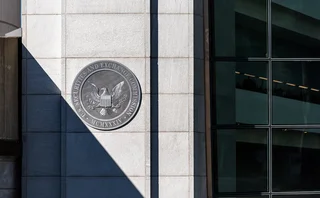
NAB to reopen options desk
National Australia Bank (NAB) hopes to reopen its currency options desk in the "near term", said chairman Graham Kraehe last week, reports RiskNews' sister publication, FX Week .
In order to reopen the desk, NAB had to address a series of risk management failings, including introducing a new policy on limits, routinely breached by the four traders responsible for the losses. Among other requirements, NAB had to improve oversight of risk positions, independent sign-off on pricing models for outstanding currency options, tighter control around internal trades and back-office confirmations, and a reliable procedure for sourcing revaluation rates.
Kraehe said last week the bank is making "good progress" in making the required changes. He said these include: imposing tighter control over market trading; appointing a new head of market risk; adding more staff in risk and redefining their roles; and implementing a new risk limits policy for trading. A spokesperson added that the bank has improved the process by which employees can raise points of concern with the bank.
NAB has also implemented a new bonus structure amid speculation that the four sacked traders entered into ever more risky and unauthorised trades to protect their annual bonus payouts, totalling A$790,000 for all four for the 2003 financial year.
Despite NAB's efforts to get its currency options desk back on track, some feel the bank is facing an uphill struggle after being out of the market for nearly nine months. One options specialist in London said it would need to price very competitively to win back business that will have moved elsewhere.
Only users who have a paid subscription or are part of a corporate subscription are able to print or copy content.
To access these options, along with all other subscription benefits, please contact info@risk.net or view our subscription options here: http://subscriptions.risk.net/subscribe
You are currently unable to print this content. Please contact info@risk.net to find out more.
You are currently unable to copy this content. Please contact info@risk.net to find out more.
Copyright Infopro Digital Limited. All rights reserved.
As outlined in our terms and conditions, https://www.infopro-digital.com/terms-and-conditions/subscriptions/ (point 2.4), printing is limited to a single copy.
If you would like to purchase additional rights please email info@risk.net
Copyright Infopro Digital Limited. All rights reserved.
You may share this content using our article tools. As outlined in our terms and conditions, https://www.infopro-digital.com/terms-and-conditions/subscriptions/ (clause 2.4), an Authorised User may only make one copy of the materials for their own personal use. You must also comply with the restrictions in clause 2.5.
If you would like to purchase additional rights please email info@risk.net
More on Risk management
SEC leadership change puts Treasuries mandate under scrutiny
FICC clearing models approved, but critics think delay could revive prospects of done-away trading
Markets Technology Awards 2025: Untangling the knots
Vendors jockeying for position in this year’s MTAs, as banks and regulators take aim at counterparty blind spots
Risk Awards 2025: The winners
UBS claims top derivatives prize, lifetime award for Don Wilson, JP Morgan wins rates and credit
An AI-first approach to model risk management
Firms must define their AI risk appetite before trying to manage or model it, says Christophe Rougeaux
BofA sets its sights on US synthetic risk transfer market
New trading initiative has already notched at least three transactions
Op risk data: At Trafigura, a $1 billion miss in Mongolia
Also: Insurance cartels, Santander settlement and TSB’s “woeful” customer treatment. Data by ORX News
Cyber risk can be modelled like credit risk, says Richmond Fed
US supervisors may begin to use historical datasets to assess risk at banks and system-wide
The changing shape of risk
S&P Global Market Intelligence’s head of credit and risk solutions reveals how firms are adjusting their strategies and capabilities to embrace a more holistic view of risk







